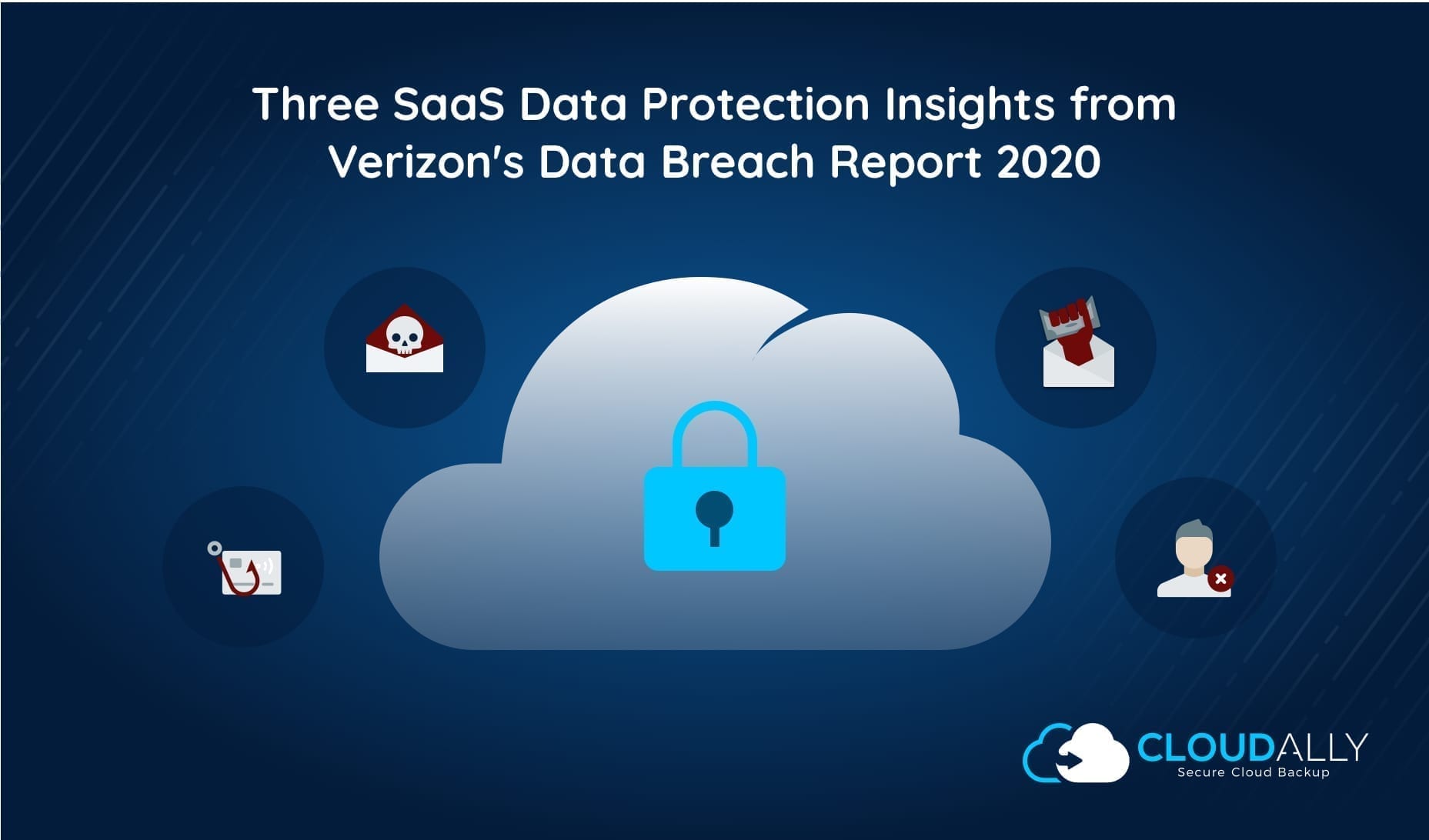Verizon’s Data Breach Report
SaaS Data Protection for Office 365
Verizon’s Data Breach Investigation Report, first produced in 2008, is an incredibly insightful and popular analysis of a global swathe of breaches and security misadventures. In its 13th year, this year’s report analyzes 32,002 security incidents and 3,950 confirmed breaches from 81 global contributors from 81 countries. As we do every year, we read through it with great interest, through the lens of SaaS data protection, in particular. If you’ve just moved to the cloud – a SaaS platform like Microsoft 365 (formerly Office 365) or G Suite (Google Apps) – and are wondering why data on the cloud needs protection.
Read on.

Our SaaS data protection insights from the Data Breach Report
#1 Everyone’s on the Cloud. Including the Hackers.
There’s no stopping the cloud’s popularity – especially boosted by the lockdown. Demand for Microsoft Teams (a part of Office 365) saw a huge surge in daily active users up by 70 percent to 75 million. Google’s G Suite now has 6 million paying customers, up from 5 million a month ago.
Threat actors too have jumped on to the cloud-wagon too. As per the Data Breach Report, cloud-based data is under increased attack. Cloud assets were involved in about 24% of breaches, while on-premises assets were involved in 70%. Amongst the cloud breaches, 77% of them involved compromised credentials. Cybercriminals are loving the path of least resistance, using stolen credentials.
#2 Human error rolls out the red carpet for cyberattacks
Amongst the top “threat action types” analyzed by the Data Breach Report such as Malware, Social, Ransomware, Error, and Hacking; Error takes the top spot. It has usurped Malware and equals Social attacks in its potency. The two main causes of breaches due to error are Misdelivery, sending important data to the wrong recipient, and Misconfiguration, whereby cloud databases or file storages are not secured correctly, and can consequently be exploited. Misconfiguration errors have gone up by more than 20% in the past two years.
When you add to the equation that breaches caused due to Social causes, such as phishing, also hinge on “human error” for their success, there’s no denying that your employee is the chink in your cyber-secure armor. We’re doing such a good job of handing over credentials via human error, that hackers are resorting less to malware to architect a data breach. Why take the trouble?
When a human error didn’t offer credentials or a network entry point to hackers on a platter, malicious intent did. Once again by internal actors. While 70% of breaches were caused by external hackers, 30% involved internal actors using “privilege abuse”.
#3 Social Engineering is the hacker’s favorite tool
The ubiquity of cloud usage amongst organizations of all sizes – small and medium-sized businesses (SMBs) and large enterprises – has also seen a rise in social engineering attacks across all organizations for the much-prized credentials. Social engineering was the entry point in 22% of breaches. The Data Breach Report pegs the main vector as email 96% of the time (3% were website-based and the remaining 1% were via Phone or SMS). Phishing has even beaten stolen credentials as the top threat action in breaches.
Pointers to Protect
- Verizon’s Data Breach Report makes it clear that the cloud needs protection too. This is particularly essential as valuable business-critical data and workflows are increasingly being moved to the cloud. However, the cloud still remains secure when compared to on-premises assets, which were involved in 70% of the attacks.
- The dangers of compromised credentials can be thwarted by these magic words – Multi-Factor Authentication (MFA). As the report states, “Attackers prefer short paths and rarely attempt long paths”. Adding that additional level of authentication can be the perfect deterrent for hackers to break through multiple layers of security.
- Turn your weakest link into your strongest defense. Educate and train your employees about phishing red flags, good email/social media hygiene, malware scams, and endpoint device security.
- SaaS backup is your SaaS data’s safety net. When all else fails, and a breach is knocking, or rather breaking through your door, rest easy with reliable backup and recovery. With your SaaS data securely backed up on the cloud, disaster recovery will be faster. Consequently, business continuity will be minimally impacted and the impact of the breach minimized.
Protect your SaaS data with CloudAlly
Comprehensive data protection is only possible with the failsafe guarantee of data recovery. Our award-winning, top-rated SaaS backup solutions for Microsoft 365, G Suite, Salesforce, Box, and Dropbox provide end-to-end automated backup and two-click recovery. What’s more, all our solutions support MFA with backups stored on well-encrypted AWS servers. Thus reducing the risk of breaches due to on-premises storage.
Don’t risk a breach – Try our full-featured trial or contact us for a demo. Rest easy with CloudAlly as your SaaS data protection partner.



